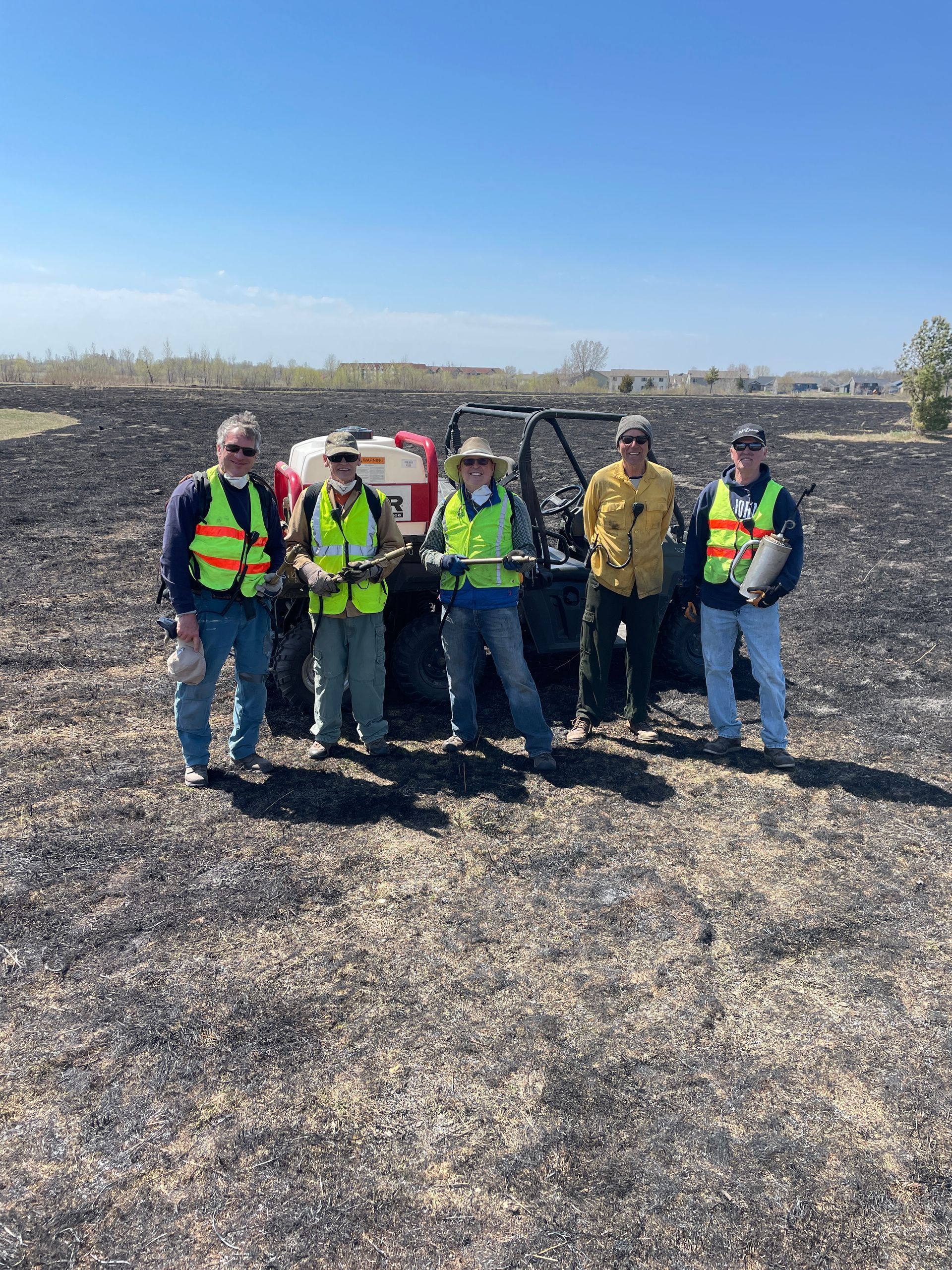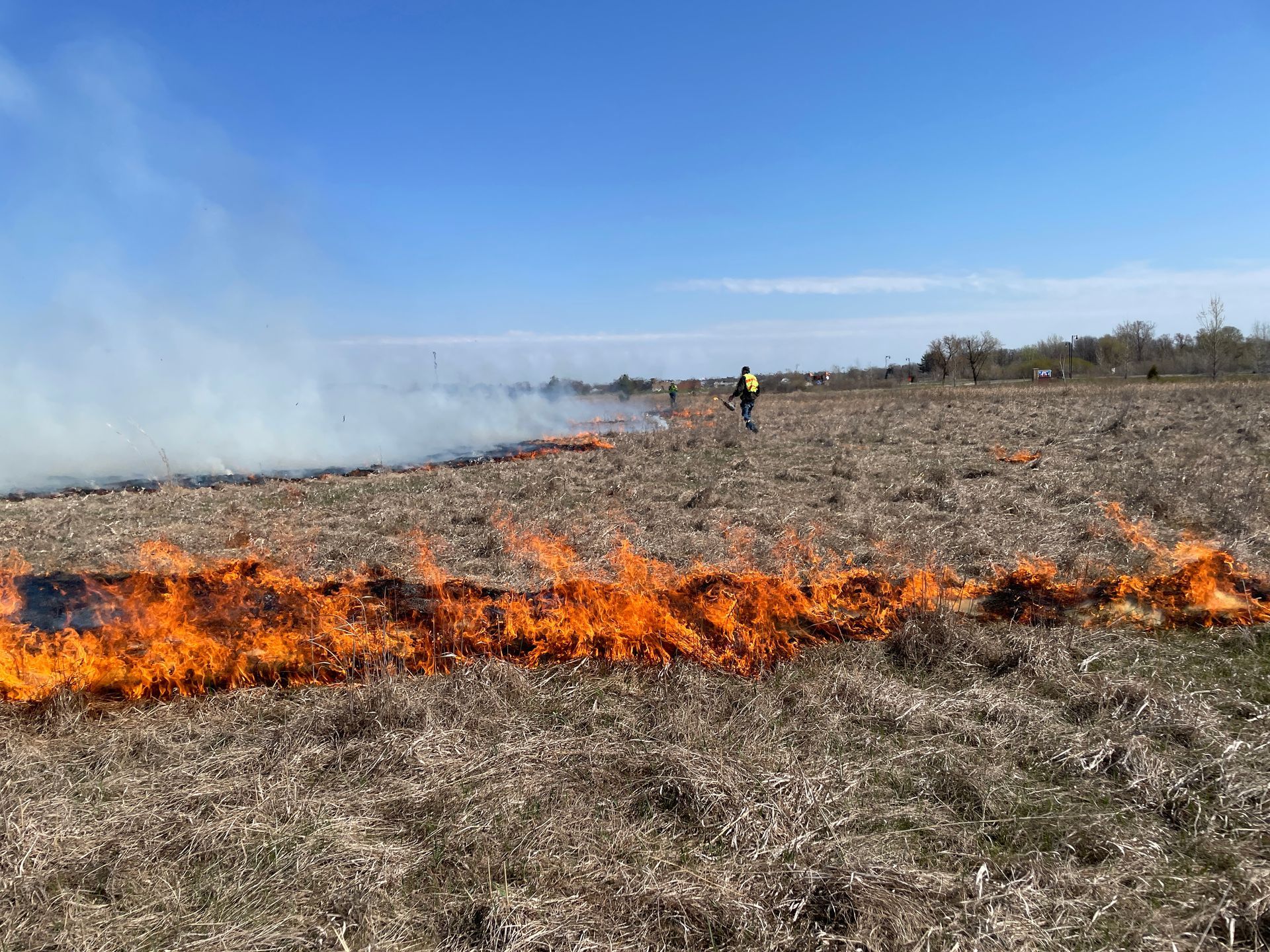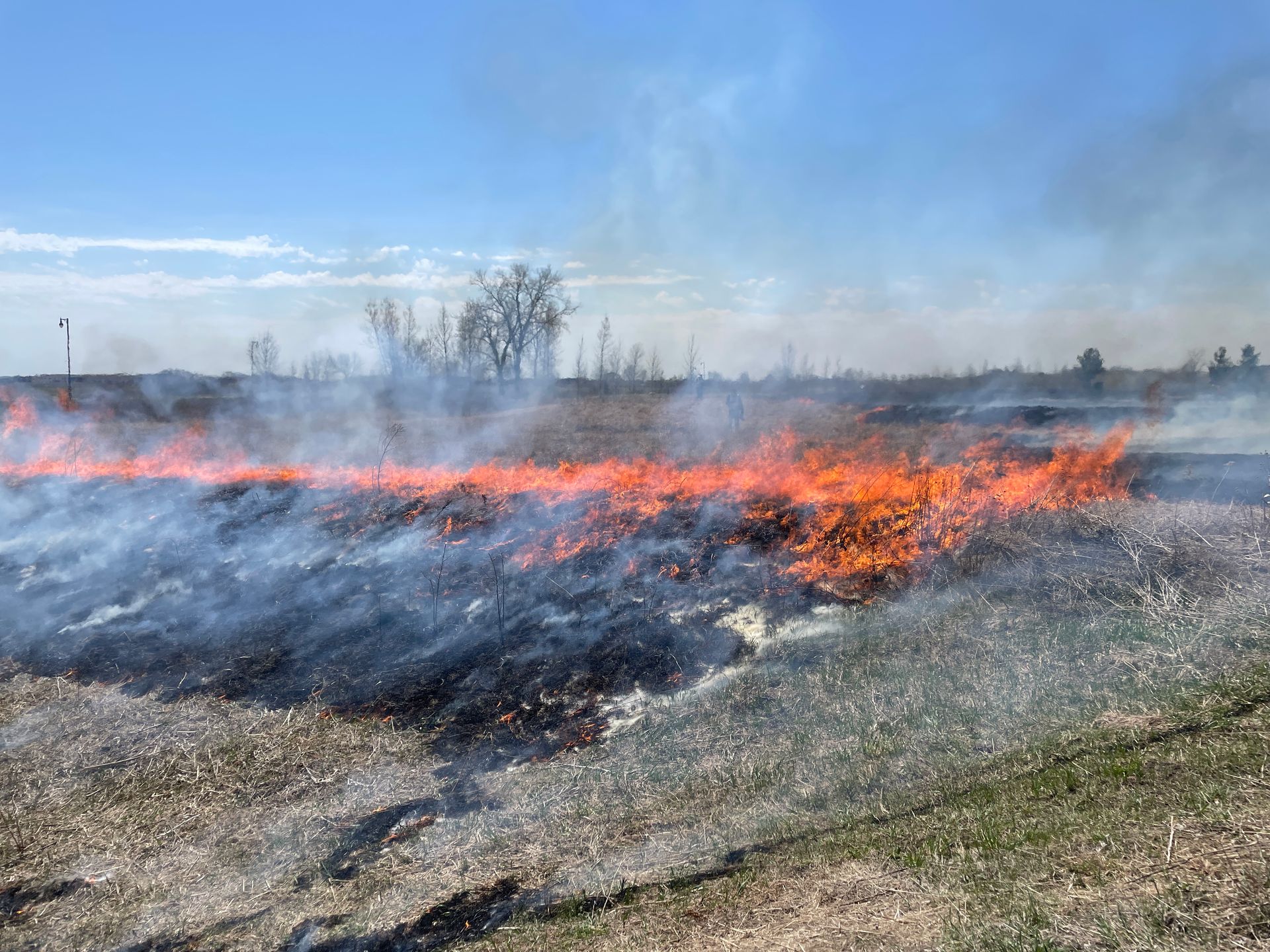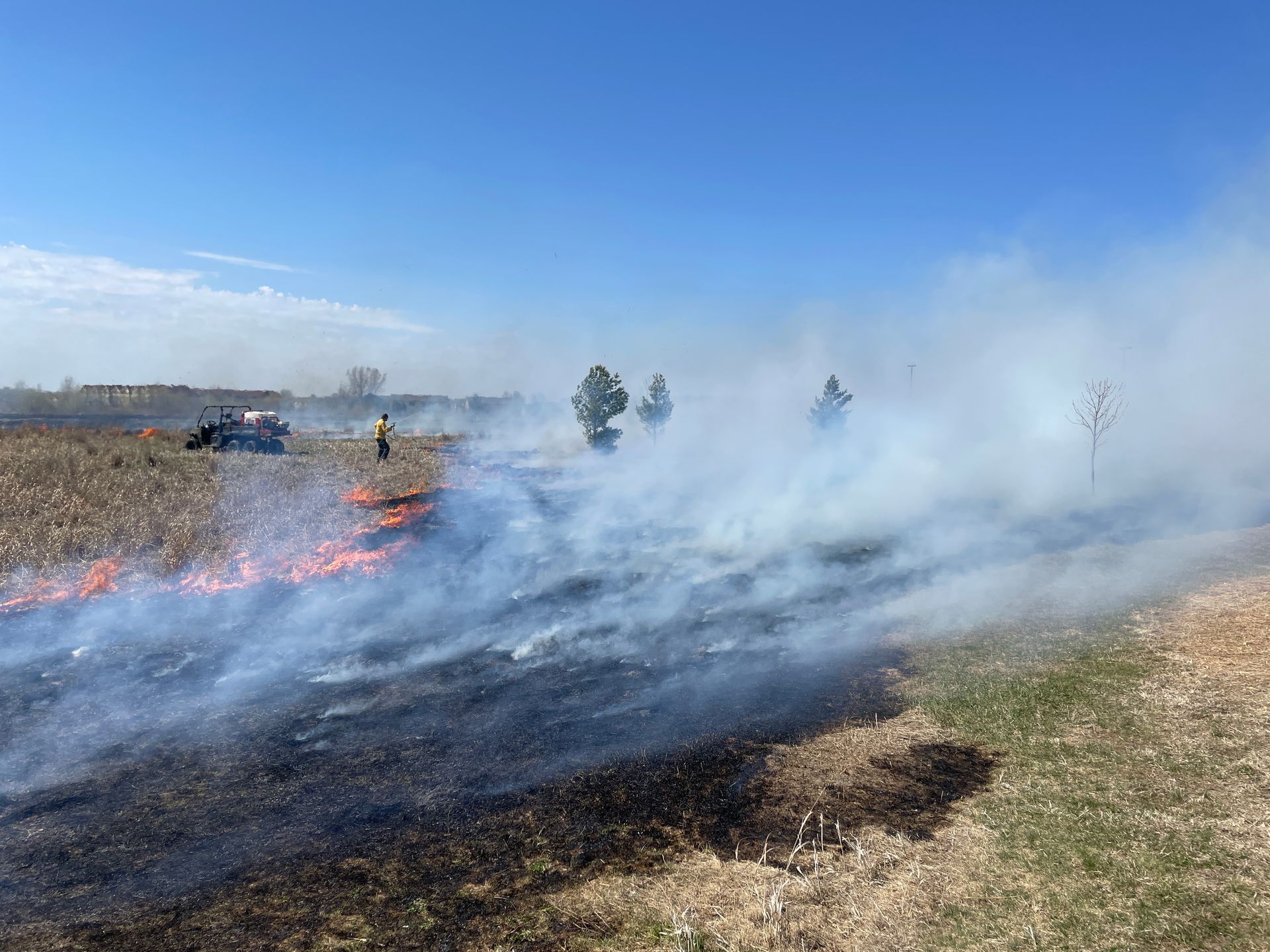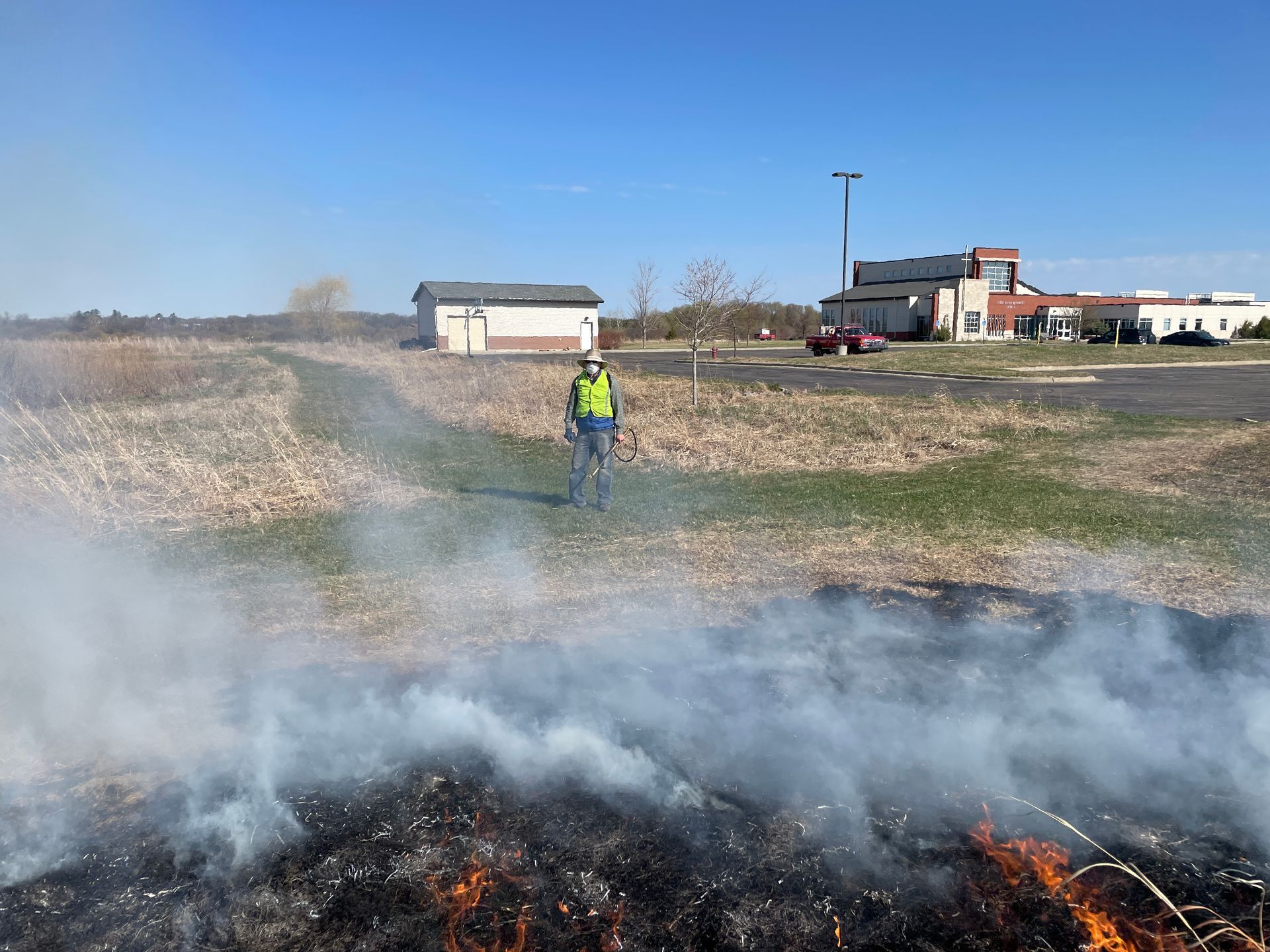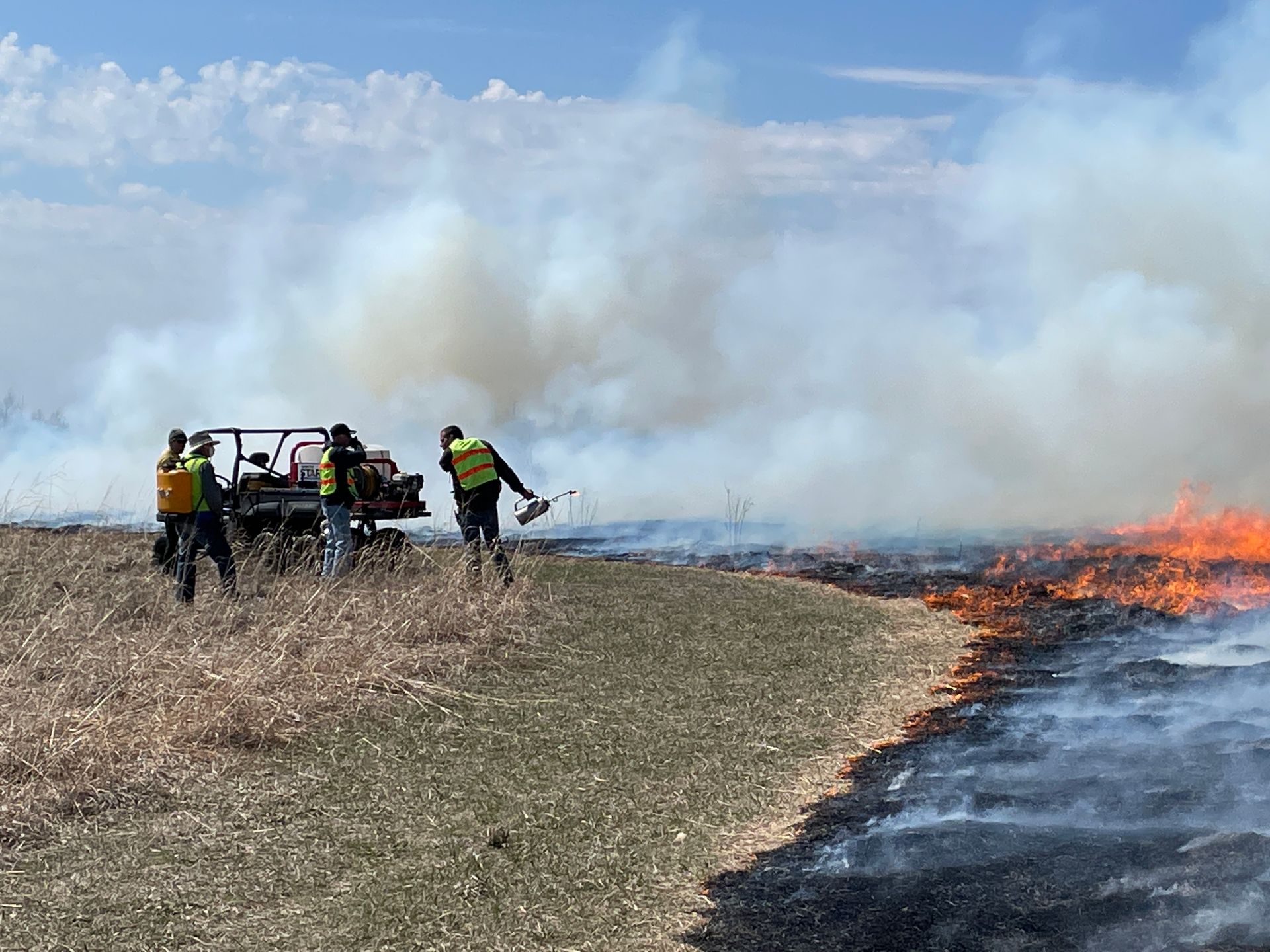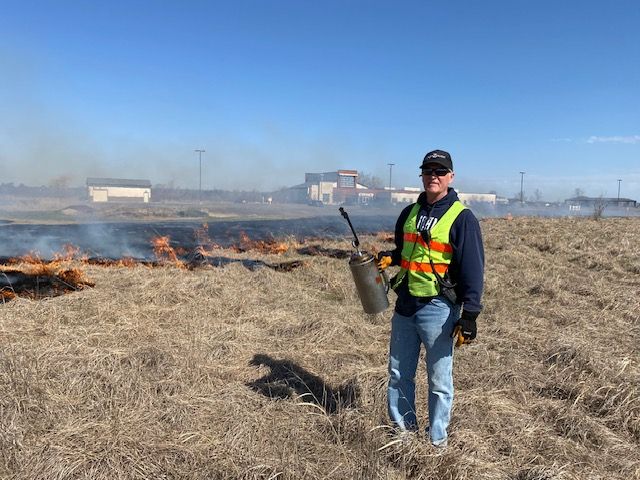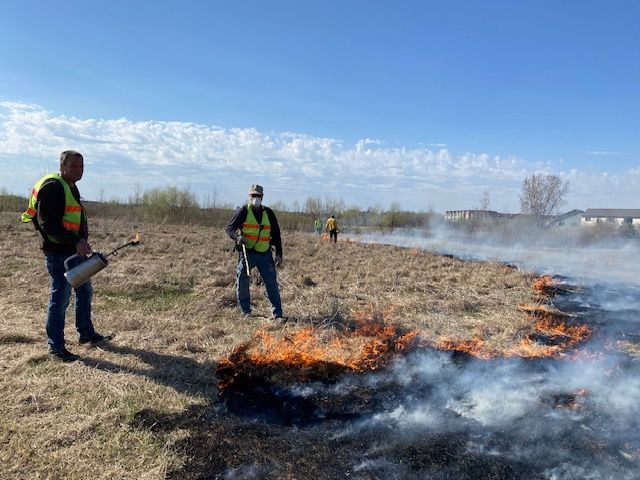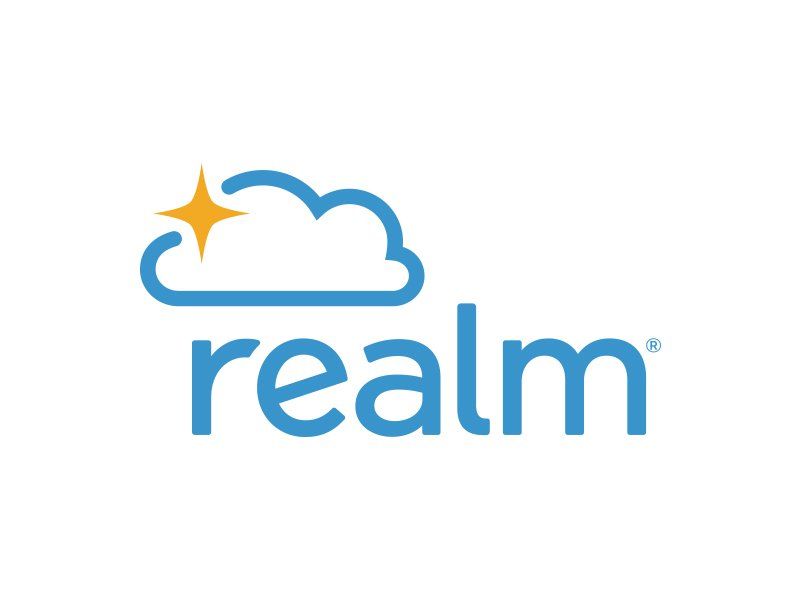OUR COMMITMENT TO CREATION
Why Burn Our Prairie?
Paula Tompkins, Land Stewardship member
Some people are surprised that an important part of developing and maintaining a prairie is a schedule of regular, controlled prairie burns. Regular, controlled burns are called prescribed burns. If we do not regularly burn our prairie, it becomes more susceptible to an uncontrolled prairie fire caused by a lightning strike or a cigarette thrown out a window. Uncontrolled prairie fires sometimes become dangerous wildfires.
Prescribed burns also are crucial for maintaining the health of an existing prairie and for prairie restoration. One benefit of prescribed burns is removing thatch that blocks the sun from germinating native plants and killing invasive plants and unwanted trees that can overpower native plants. Burning promotes the diversity of native prairie plants that can survive adverse weather conditions, such as drought. A second benefit of prescribed prairie burns is
adding nutrients to the soil, stimulating growth of native plants. Finally, burn management promotes growth of a diversity of prairie plants that provide food and cover for pollinators, birds, and animals.
May 2023 Prescribed Burn

